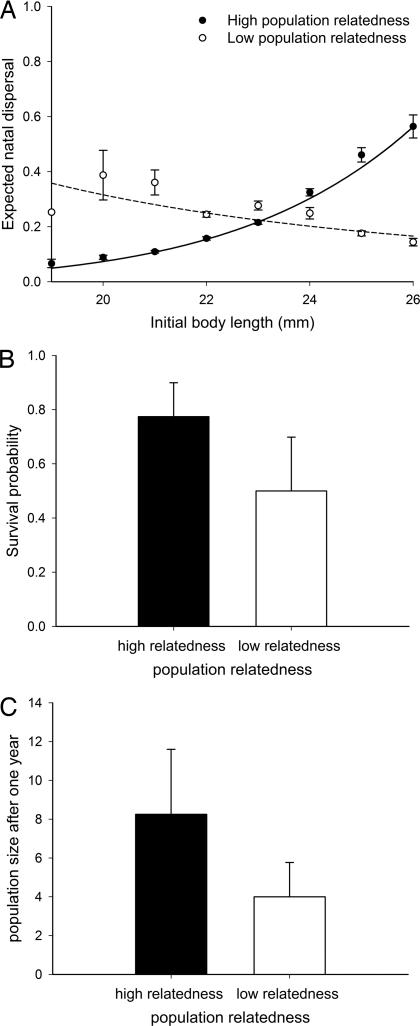Fig. 1.
Effect of population relatedness on parameters of colonization success. (A) Offspring-dispersal probability from the source population. Offspring dispersing from populations with high relatedness had significantly bigger body size at birth than nondispersing offspring, and no differences were observed in populations with low relatedness (Table 1; independent contrast high population relatedness: F1,790 = 9.65, P = 0.0022; low population relatedness: F1,790 = 0.57, P = 0.4506). The data have been back-transformed from values predicted by the logistic regression; each circle corresponds to a single individual. The fitted curves are represented for high population relatedness (solid line) and for low population relatedness (dashed line). (B) Survival of colonizers in relation to the average relatedness of the source population. Colonizers from populations with high relatedness survived better than individuals originating from populations with low relatedness (F1,6 = 8.99, P = 0.0240). The values are least-square mean ± SD. (C) Population size in relation to the average relatedness of the source population. The population size of the empty patches was significantly higher when individuals originated from a population with high relatedness compared with low relatedness (logistic regression with Poisson distribution, Proc GENMOD: χ1 = 6.02, P = 0.014). Values are means ± SE.

